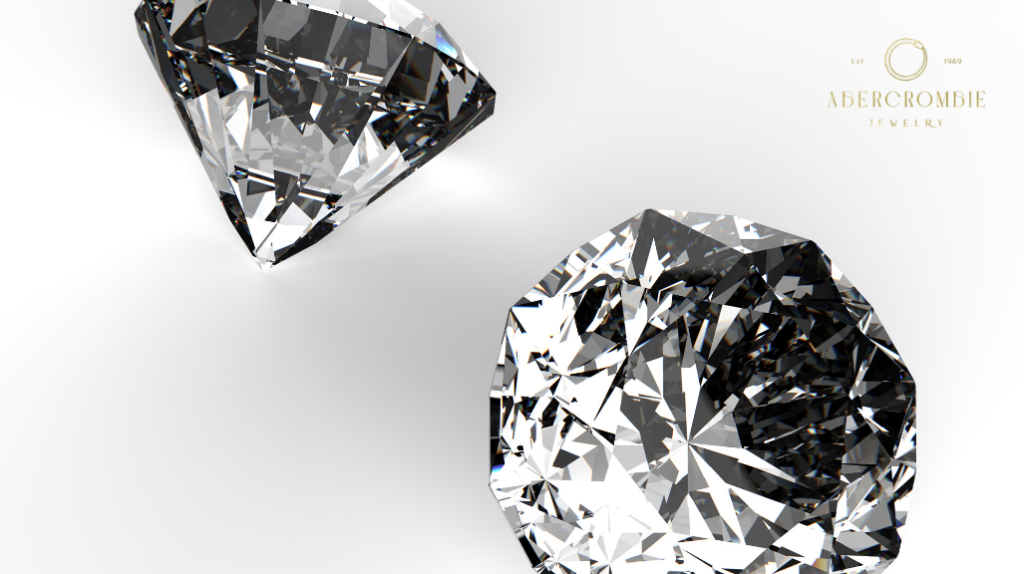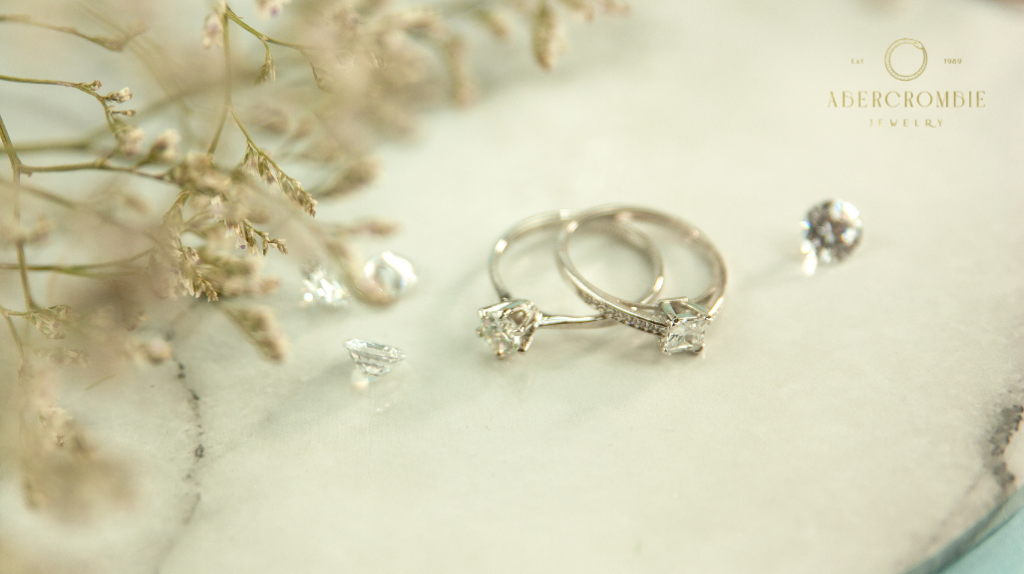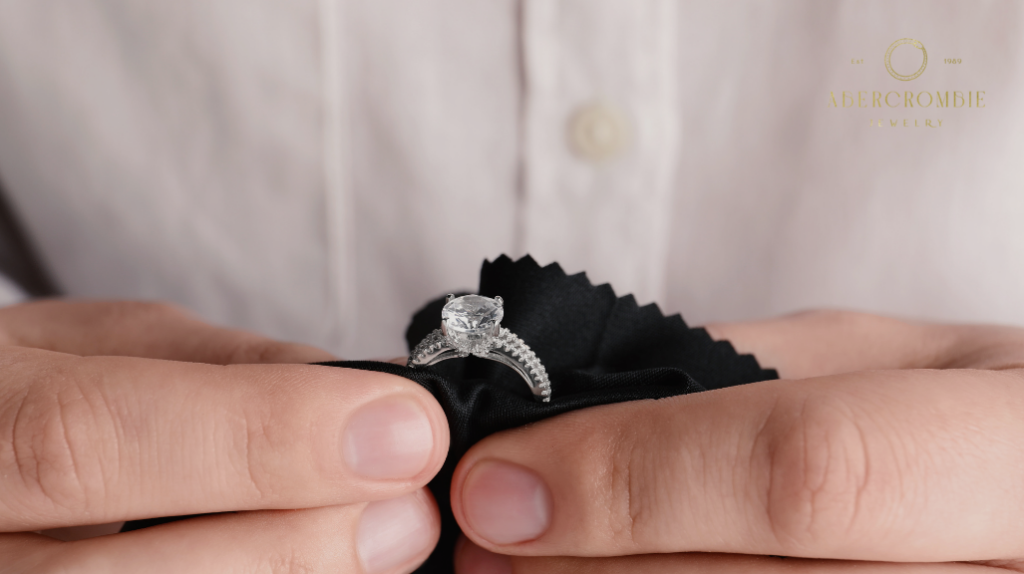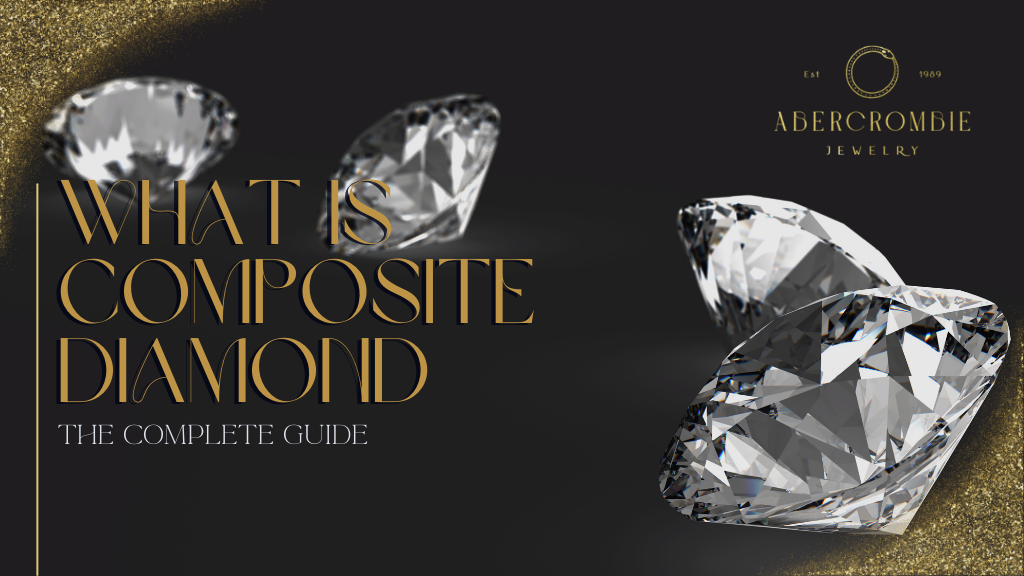Discover everything you need to know about composite diamonds in this complete guide by Abercrombie Jewelry. Learn what is composite diamond and if it’s right for you.
Everybody loves diamonds, but not everybody loves the price tags that often accompany them. Buying a big, flashy diamond ring appeals to many for different reasons, but it may not be feasible without thousands of dollars to spare.
The answer for some may be composite diamonds.
What are composite diamonds, and how are they different from natural diamonds and other varieties of this precious gemstone?
In this comprehensive guide, we explain how composite diamond works, what makes them a suitable choice, and where the potential issues lie if you choose to go down this route.
We also discuss how to pick the best composite diamond and a few tips on how to look after it properly if you have one.

What Is a Composite Diamond?
A composite diamond is multiple small diamonds set together to make them look like one stone.
Sometimes, they are fused or glued together into a solid solitaire diamond shape, and other times, they are arranged individually but very close together to trick the eye into thinking it is just one single diamond.
How Is a Composite Diamond Made?
The diamonds used in composite designs can be natural or lab-grown, but they are far more likely to be produced in a lab.
Sometimes, other elements are used in the composition, including glass filling, cubic zirconia, and other clear gemstones.
A composite diamond ring uses an intricate setting technique that perfectly fits multiple small diamonds together- fusing or gluing them into place.
In some designs, the small diamonds are not fully set together but are placed incredibly close to create the same overall appearance.
By doing this, many composite diamond rings have an interesting and dynamic brilliance you don’t always find in solitaire diamond rings. It concerns how light reflects off the many surfaces and travels through the invisible gaps between the smaller stones.
Advantages of Composite Diamonds
There are a few reasons to choose a composite diamond ring over traditional diamonds. Here are some of them.
Affordable Price
Without a doubt, the main reason people buy composite diamond rings is the affordability factor. They are more cost-effective than large, single-stone diamonds.
You can get the same sparkle and size of diamond for a lot less money if you opt for a composite design.
Design Versatility
Speaking of design, there is a lot more versatility on offer with composite diamond rings.
As well as buying a large diamond made from several diamonds, you can purchase rings with individual composite diamonds laid out in various patterns.
If you buy the composite stones individually, you can even have them set in a customized design. That is much harder to get with traditional diamonds.

Varied Composition Options
The composition of these diamonds is not one-size-fits-all. Many varieties use a mixture of stones.
With traditional diamonds, you are somewhat limited to the color and shape, but not with composite diamonds. Instead, you can pick rings with various stones to create more interesting and unique designs, colors, shapes, and fluorescence.
Easy for Everyday Wear
Because composite diamonds are more durable and scratch-resistant, they are easier to wear daily without worrying too much about damage. This could be a good choice if you are looking for a ring to wear anywhere.
Cons of Composite Diamonds
However, composite diamonds have some potential downsides over traditional stones. These are some of the things to be aware of.
Difficult to Replace or Repair
Because large composite diamonds comprise several shaped pieces, replacing one that falls out or gets damaged can be difficult. It takes extra care and precision- which often means higher costs for the time and labor of the diamond cutter.
Reduced Brilliance
Generally, a composite diamond will not shine as brightly or stay as brilliant over time as a single diamond. Composite diamonds are smaller, so there is less surface area to reflect light. Even if you have a large diamond made up of many smaller diamonds, it still won’t shine in quite the same way.
Certification Issues
Getting certification for a composite diamond can be difficult, which is reflected in the resale value if you ever want to get rid of it. Most composite diamond elements weigh less than one carat, so they don’t generally receive certification.
Limited Future Value
Again, selling a composite diamond will not get you the same money as a traditional diamond. First, they are less likely to be made using natural diamonds, which are already worth less.
Furthermore, composite diamonds often come without grading, so you can’t always guarantee the quality of the four Cs. This also makes it harder to sell them in the future.

How to Pick a Composite Diamond
If composite diamonds sound like something you may be interested in, there are some things to look for and others to avoid. Here are our buying tips for composite diamonds.
Things to Look For
- Always buy from a reputable jeweler.
- Look into the setting style. Are they notched diamonds or set with glue? This tells you a lot about their durability and how difficult they will be to repair.
- Ask about the individual stones and their carat weights. The total carat weight may be less than you think. Depending on your purposes and preferences, this can determine whether or not the diamond is right for you.
Things to Avoid
- Avoid buying composite diamonds with a yellow tinge. It is only likely to worsen with time due to the lack of nitrogen.
- Make sure there is more diamond than other materials. The fewer diamond pieces used in the composition, the less durable and valuable it becomes.
- You don’t want a ring with a lot of glass filling, as it can become visible and ruin the piece’s overall look. A little bit is fine, but none is better.
Read Next: How are Diamonds Cut? Everything You Need to Know
How to Care for a Composite Diamond Ring
The better care you give to your composite diamond ring, the longer it should last. Luckily, it is pretty easy to look after this style of ring!
A primary care routine for a composite diamond ring is as follows.
Start by washing the ring in warm water with some dish soap. Rinse it well and dab it dry- storing it in a cloth-lined jewelry box when you are not wearing it. If you notice any loose, missing, or broken stones, take them to a diamond specialist as soon as possible for professional repairs.

Summary
What is composite diamond ring design? It is the technique of combining multiple tiny diamonds to create the appearance of a single large stone.
This technique allows more people to enjoy wearing beautiful and impressive diamond and engagement rings without the hefty price tag so often associated with the pleasure.
There are pros and cons, but a composite diamond could be the answer if you want a durable, dazzling piece that looks great and doesn’t break the bank.
Frequently Asked Questions
Here are a few composite diamond FAQs.

